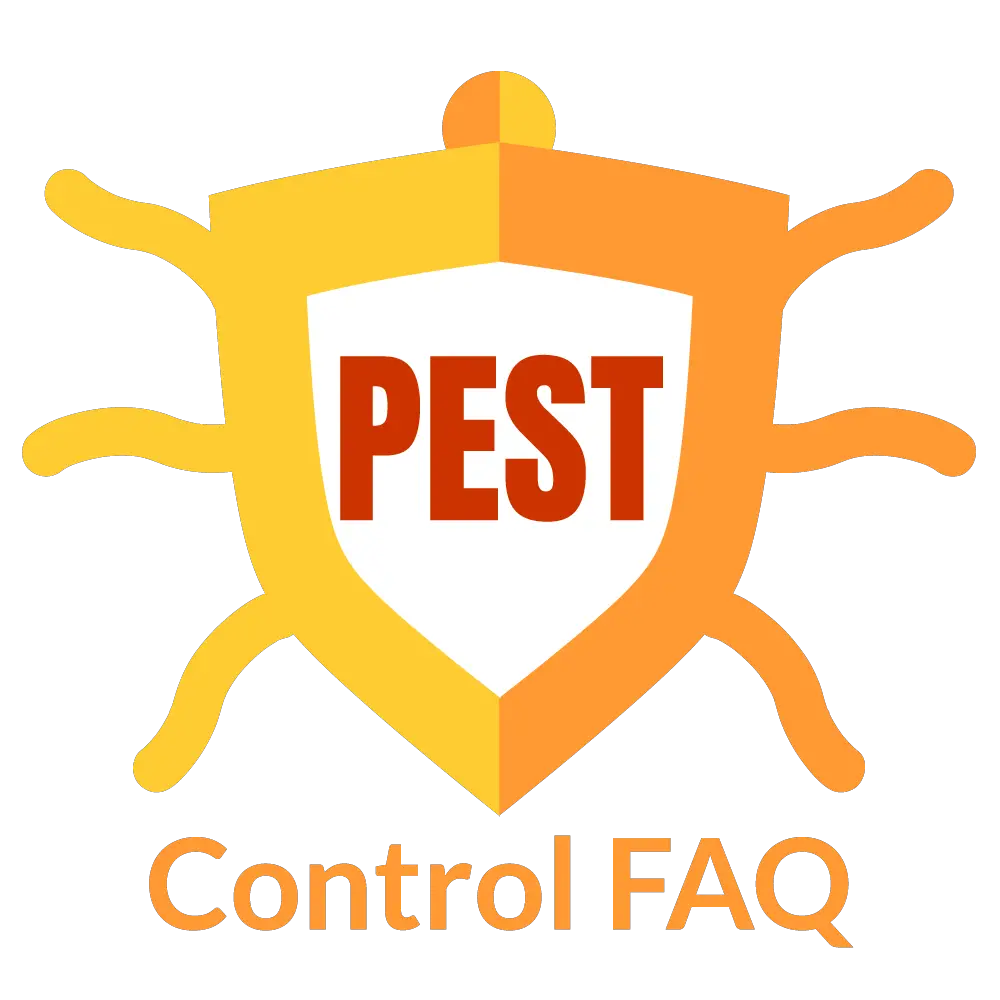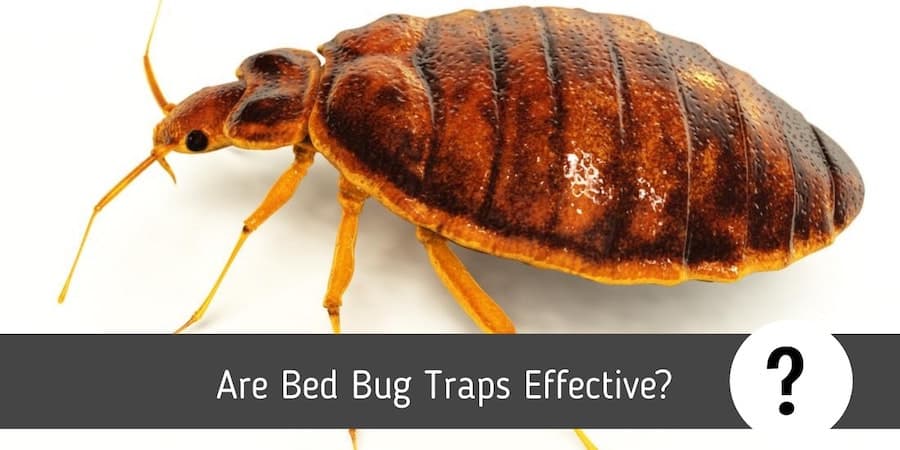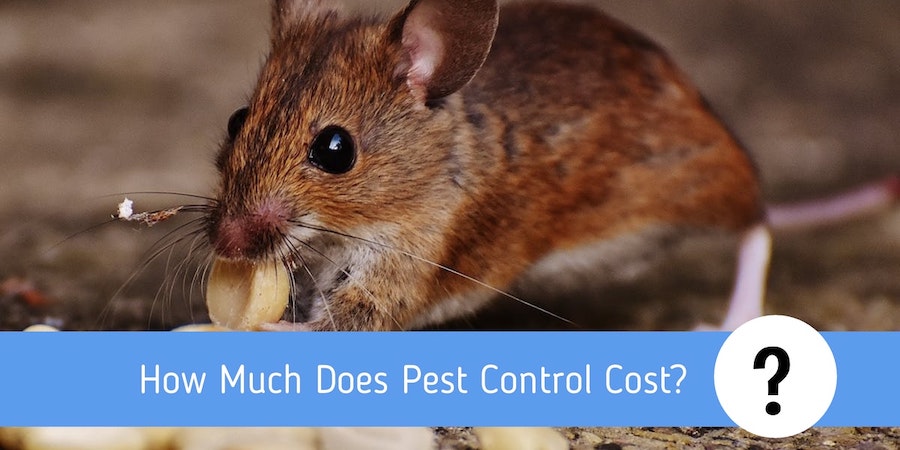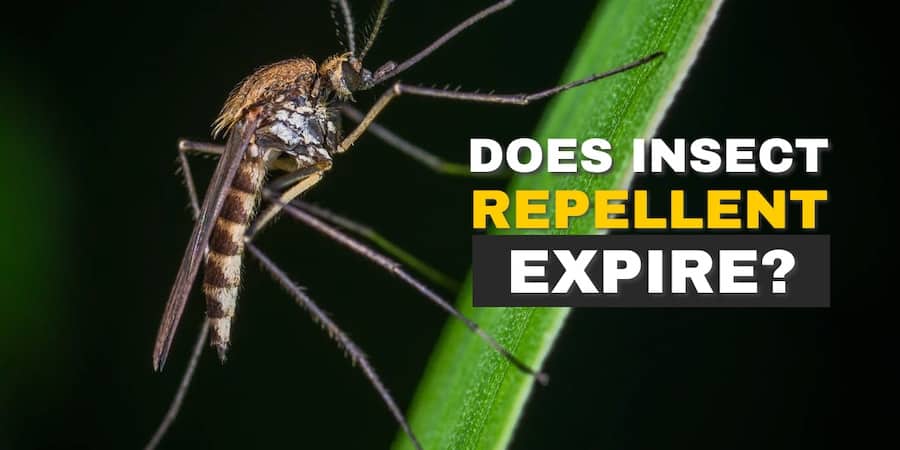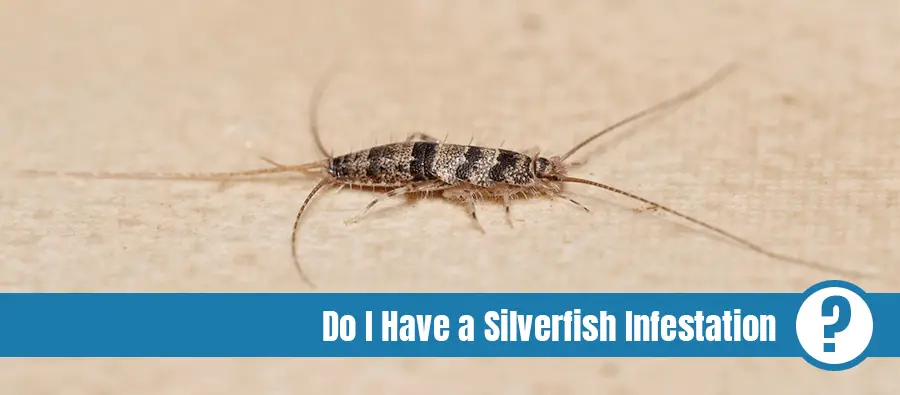When you are dealing with a bed bug infestation, a trap may seem like the easiest solution. Placing traps is an affordable option, but may not always solve your problem.
So, are bed bug traps effective? Most traps are ineffective at getting rid of bed bugs. Live traps are typically only effective for mild bed bug infestations. Traps are unlikely to capture all the adult bugs and unable to collect the eggs. Other factors that impact the effectiveness of the trap include the type of trap, location, and the severity of the infestation.
In this article, you can find out how to get better results with bed bug traps, including which traps to use, where to place them, and when to consider alternative solutions for exterminating these annoying bugs.
Table of Contents
Using Passive and Active Bed Bug Traps
Bed bug traps are either passive or active.
Passive bed bug traps overview
A passive bug trap is designed to trap bugs as they travel between the spots where they live and the spots where they feed.
As bed bugs need to crawl, you need to place passive traps on the ground or near furniture, such as your bed. Some of the most common DIY bug traps include duct tape, petroleum jelly, or any sticky substance.
You may also use store-bought traps. Interceptor cups are the most common type of trap. You place these traps around the legs of beds and other furniture. The trap consists of two bowls, with a smaller bowl placed inside a larger bowl.
The bowl may contain a pesticide or poison to kill bed bugs that attempt to crawl up or down the bed.
Active bed bug traps overview
Active traps lure bugs from their hiding spots. Many of these traps release small amounts of heat and carbon dioxide. The trap attracts the bugs, who then crawl into the trap and cannot get out.
Active traps tend to cost quite a bit more compared to store-bought passive traps. However, they are often more effective, as they help draw the bed bugs out of their hiding spots.
Are bed bug traps effective?
Unfortunately, passive and active traps rarely get rid of the entire infestation. The eggs remain after you use the traps to catch most of the adults.
When the eggs hatch and the new bugs mature, you may eventually trap or kill them, but the cycle may continue. If you want to completely solve your bed bug problem, you may need to combine multiple methods.
For example, before placing the traps, you should try to determine where they are hiding. Placing the traps near their hiding spots may help you catch more bugs. You can also try utilizing more than one trap.
You can protect your bed and furniture with the interceptor cup, use duct tape around doors, and use an active trap to kill bed bugs hiding on furniture or in your bed.
Pros and Cons of Using Bed Bug Traps
While bed bug traps are not the most effective solution, they do offer several advantages. Using a trap may allow you to collect a specimen for accurate identification.
For example, if you or someone in your household is suffering an allergic reaction to bites, your doctor may need to verify that the bites are coming from bed bugs.
Bug traps are an affordable option
Using homemade traps, you may not need to spend any money. Some of the most used types of traps include the use of common household items, such as vinegar or petroleum jelly.
Traps are convenient
You do not need to wait for an exterminator to arrive. You can simply start placing traps. However, there are drawbacks to using traps.
They may not capture all the bugs
The main disadvantage of using bed bug traps is that they may not capture all the bugs in your house. With a passive trap, you need to wait for the bugs to travel through the trap. Active traps may not always lure bugs from all of their hiding spots.
Many homeowners use DIY methods to save money compared to hiring a professional. Like most DIY options, you may need to put in extra work to get the same results.
While an experienced exterminator can likely get rid of your infestation in a day, you may need to continually change out traps and keep your linens washed.
Due to these limitations, live traps are typically only effective for mild bed bug infestations. If the infestation has spread to multiple rooms or pieces of furniture, you are unlikely to catch enough of the bugs to stop them from constantly reproducing.
Understanding the Life Cycle of the Bed Bug
If you want to get rid of bed bugs on your own, you need to understand their life cycle, where they hide, and what they feed on. These details may help you determine the best spot for your bed bug traps.
Female bed bugs are capable to lay up to five eggs per day. If you do not kill all the bed bugs at once, the eggs are likely to hatch, allowing the infestation to continue.
Here is a closer look at the life cycle of the bed bug:
- Eggs
- Nymphs
- Adults
A bed bug egg looks like a tiny grain of rice. It is small and milky white. While a female bed bug may lay up to five of these eggs each day, she is capable to lay up to 500 eggs in a lifetime.
You can often find eggs in tight crevices, such as tucked-in sheets or the crevices in your furniture. They take about two weeks to hatch.
Nymphs are newly hatched eggs. These small bed bugs immediately start feeding. They also molt their skin five times before reaching maturity, which occurs in about five weeks.
Mature adult bed bugs feed once per week, which means you may need to wait several days to catch them with passive traps. In the right conditions, they can also live for up to six months.
Understanding the Habits of the Bed Bug
Bed bugs are nocturnal, which means that they sleep during the day and feed at night. During the day, you can find bed bugs in their hiding spots. Some of their favorite spots include:
- Bed frames
- Headboards
- Box springs
- Drapes
- Piles of clothing
- Slipcovers
- Under cushions
- Inside mattresses
Bed bugs do not create nests like many other critters. However, they do tend to congregate and may return to the same sleeping spot multiple times.
The main indicators of a bed bug infestation are often obvious. If you search for areas where they may hide, you should detect a few of the following signs:
- Unhatched and hatched eggs
- Bed bug casings
- Reddish stains
- Dark stains and spots
- Unusual Odors
- Bites
The reddish stains are the result of crushed bed bugs. You may see these stains under mattresses or in tight crevasses. Dark stains and spots are from dried bed bug excrement and molted skin.
You may also notice bites or an allergic reaction to the bites. Bed bugs feed on blood from people and animals. They feed at night when you and your pets are most likely prone.
The most common areas for bed bug bites include the neck, hands, shoulders, arms, legs, and face. There are lots of people who are hypersensitive to these bites and may experience additional itchiness and irritation.
Alternative Ways to Get Rid of Bed Bugs
If the bed bug traps do not work, consider alternative methods for killing bed bugs. There are a series of steps that may work for dealing with mild bed bug infestations:
- Determine where the bugs sleep
- Remove the bugs with tape or a vacuum
- Wash all your bedding and linens
- Throw away stained items
- Thoroughly vacuum carpeting and furniture
- Keep your home free of clutter
- Mist your home with essential oils
You first need to find the bed bugs, so you can get rid of as many as you can. The most common hiding places are furniture, beds, and tight spots. Remember to look for stains, eggs, and the bugs themselves.
Use a duck tape or vacuum
When you find the bugs, collect as many as you can with duct tape or a vacuum. Dispose of these bugs and then collect all your bedding and linens.
Wash everything in your house
Wash everything in your house and ensure that you do not have any clothing on the floor. You should get rid of any clutter and throw away items covered in eggs or excrement.
Mist your home with oils
You can also mist your home daily using a combination of essential oils. Mix orange oil, cedar oil, and tea tree oil with water. Use a spray bottle to mist your furniture, bedding, drapes, and carpets.
Repeat these steps to continually cut down on the number of bed bugs in your home. If you are lucky, you may solve the issue on your own.
How to Reduce Your Risk of Bed Bug Infestations
Another way to deal with bed bug infestations is to reduce your risk of an infestation in the first place. You should also follow some of these precautions if you are currently dealing with an infestation, as they can help keep the problem from spreading.
Always Keep Your Linens and Clothing Clean
Keeping your home clean and picked up may reduce the risk of an infestation and help keep the bed bug numbers down if they are already in your home.
Remember to keep your home free of clutter and avoid leaving piles of clothing on the floor. Use laundry baskets or hampers to collect dirty clothes and wash them frequently.
You should also change your bed sheets, and pillow covers every two weeks. If you already have an infestation, wash your bedding at least once per week. The frequent cleaning helps kill the eggs and adult bed bugs hiding in your bedding and makes them less likely to seek out your sheets for a hiding spot.
Cover Your Mattress in an Encasement System
Mattresses and other furniture are prime spots for bed bugs, as they provide a place to hide, eat, and reproduce. After the bugs infest your mattress, you are unlikely to get rid of them without getting rid of the mattress.
Covering your mattress in an encasement system helps keep the bugs out. Keep in mind that this will not solve an existing bed bug infestation, but it helps to add a barrier against future infestations.
These protective covers fit tightly over your mattress. They offer a protective seal that keeps bugs, moisture, and spills from penetrating your mattress.
You can also encase your clothing. If you have a lot of clothing that you store during different seasons, store the extra clothing in sealable bags.
Avoid Bringing Home Secondhand Furniture
Secondhand furniture is often the cause of bed bug infestations. People unsuspectingly bring the bed bugs home in infested furniture.
If you cannot avoid the temptation to bring home secondhand furniture, thoroughly inspect it before bringing it inside. You may even want to vacuum and clean the furniture on your porch, instead of taking it indoors to do it.
Check Your Luggage After Coming Home From a Trip
Besides secondhand furniture, you may bring bed bugs home in your luggage after going on a trip. If the hotel or resort had a bed bug problem, you could carry them home in your clothing inside your suitcases or duffle bags.
When you get home, open the bags and search for any signs of bed bugs, including the bugs themselves. If the bugs are present, take the entire bag outdoors. Go through every item, separating clothing from electronics or other objects that insects cannot hide on or in.
You may even want to discard all the clothing that you packed, to ensure that you do not bring any of the bugs inside.
Check Your Pets for Signs of Bed Bugs and Bites
Pets are also common carriers for bed bugs. The bugs may lay eggs in your dog’s favorite sleeping spot. When bathing or brushing your dog, look for unusual bites or any other signs of bed bugs. You may detect bed bug casings or eggs.
If you suspect that your dog has bed bug bites, inspect the bedding for signs of bed bugs. If you can detect the problem early, you have a better chance of stopping the infestation with the DIY solutions. You can try to use active or passive traps to kill the bugs before they spread.
Seal Your Home
Sealing your home prevents pests from entering and reduces the risk of infestations. Besides stopping bed bugs, this may help stop other pests from getting inside.
Search your home for cracks or crevasses that may allow entry. Use caulk to fill in the cracks along baseboards, windows, and doors.
Hire an Exterminator to Remove the Infestation
When the bug traps and alternatives are unable to get rid of your bed bug problem, you may need to contact a nearest professional pest exterminator.
Pest control companies have the equipment and experience to help solve your infestation problem quickly. The professionals are more experienced at finding bed bug hiding spots and creating an effective treatment plan.
While you may need to wait weeks to slowly get rid of the bed bugs in your home using DIY methods, an exterminator can often get rid of them in a single day.
Conclusion: Are Bed Bug Traps Effective?
Trapping bed bugs is a complicated process, and it may not solve the problem. If you have an infestation, DIY methods allow you to save money. However, you may not capture all of the bugs. Hiring an exterminator is often the most effective and fastest solution for killing bed bugs.
Related Questions
How can you trap bed bugs with tape? Duct tape is a common passive trap. You can also try to use tape to prevent bed bugs from reaching specific areas or crossing into other rooms. Lay a strip of duct tape on the floor and tape it in place with two small pieces of duct tape. You can also use a strip of duct tape to manually catch bed bugs in their hiding spots.
What are the best homemade bed bug traps for bed legs? Place a pair of stacked bowls under each leg. Each pair should include a smaller plastic bowl inside a larger container. Add talcum powder to the smaller bowl and soapy water in the larger bowl. The small bowl traps bugs climbing down from the bed while the larger bowl catches bugs on their way toward the bed legs.
What chemical kills bed bugs instantly? Many different chemicals can kill bed bugs quickly. Currently, over 300 products are registered with the EPA for use against bed bug infestations. Many of these pesticides are available at stores or online. You may also try using vinegar. The strong acetic acid destroys the bug’s nervous system.
Are bed bugs dangerous? Some people are more sensitive to the bites. If you have an allergy to the saliva of the bed bugs, you may experience extra irritation at the site of the bites. In some cases, you may need to apply an ointment to reduce the swelling or irritation. However, the bites do not pose a severe health risk.
